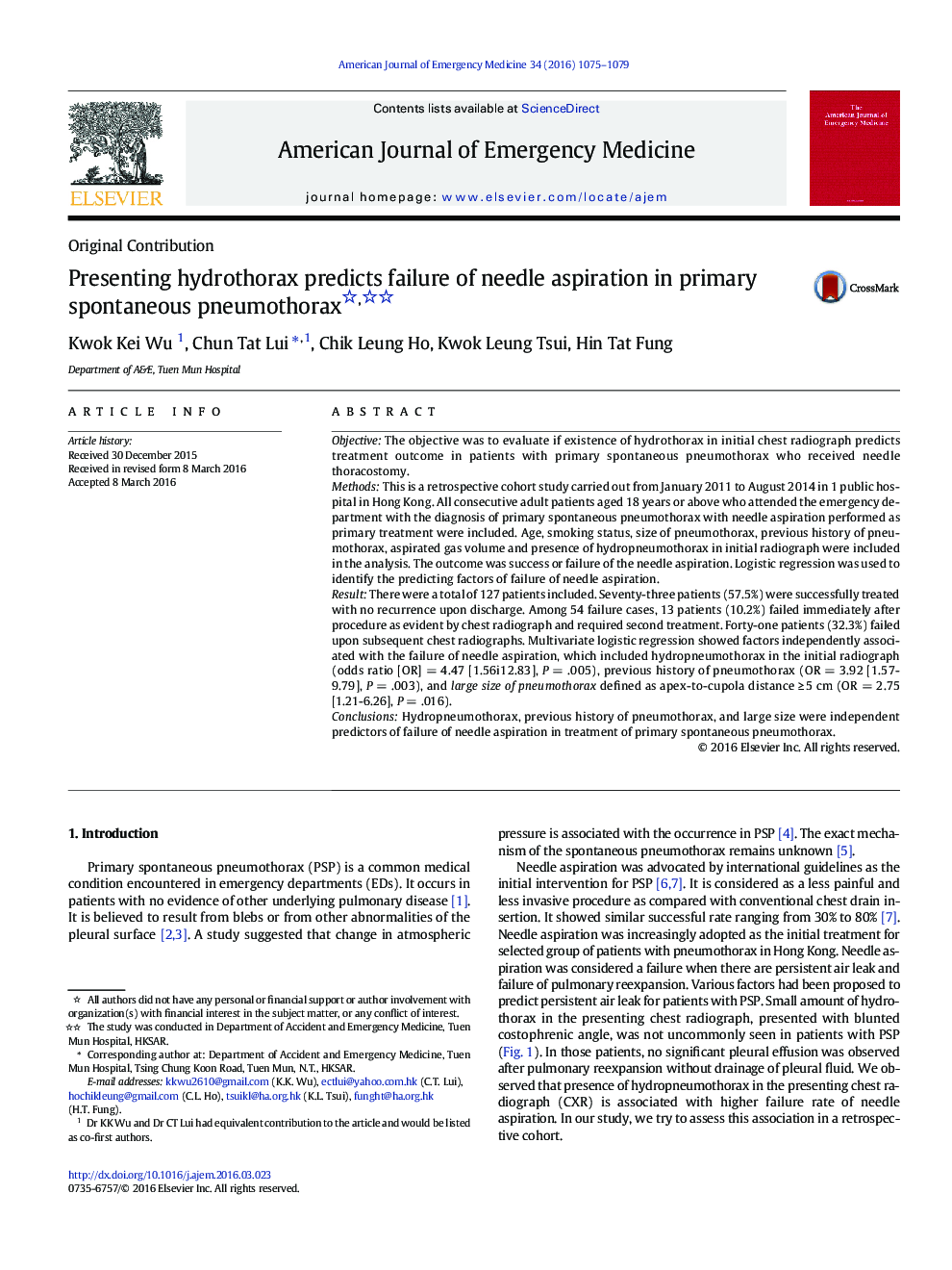| Article ID | Journal | Published Year | Pages | File Type |
|---|---|---|---|---|
| 3223127 | The American Journal of Emergency Medicine | 2016 | 5 Pages |
ObjectiveThe objective was to evaluate if existence of hydrothorax in initial chest radiograph predicts treatment outcome in patients with primary spontaneous pneumothorax who received needle thoracostomy.MethodsThis is a retrospective cohort study carried out from January 2011 to August 2014 in 1 public hospital in Hong Kong. All consecutive adult patients aged 18 years or above who attended the emergency department with the diagnosis of primary spontaneous pneumothorax with needle aspiration performed as primary treatment were included. Age, smoking status, size of pneumothorax, previous history of pneumothorax, aspirated gas volume and presence of hydropneumothorax in initial radiograph were included in the analysis. The outcome was success or failure of the needle aspiration. Logistic regression was used to identify the predicting factors of failure of needle aspiration.ResultThere were a total of 127 patients included. Seventy-three patients (57.5%) were successfully treated with no recurrence upon discharge. Among 54 failure cases, 13 patients (10.2%) failed immediately after procedure as evident by chest radiograph and required second treatment. Forty-one patients (32.3%) failed upon subsequent chest radiographs. Multivariate logistic regression showed factors independently associated with the failure of needle aspiration, which included hydropneumothorax in the initial radiograph (odds ratio [OR] = 4.47 [1.56i12.83], P = .005), previous history of pneumothorax (OR = 3.92 [1.57-9.79], P = .003), and large size of pneumothorax defined as apex-to-cupola distance ≥ 5 cm (OR = 2.75 [1.21-6.26], P = .016).ConclusionsHydropneumothorax, previous history of pneumothorax, and large size were independent predictors of failure of needle aspiration in treatment of primary spontaneous pneumothorax.
